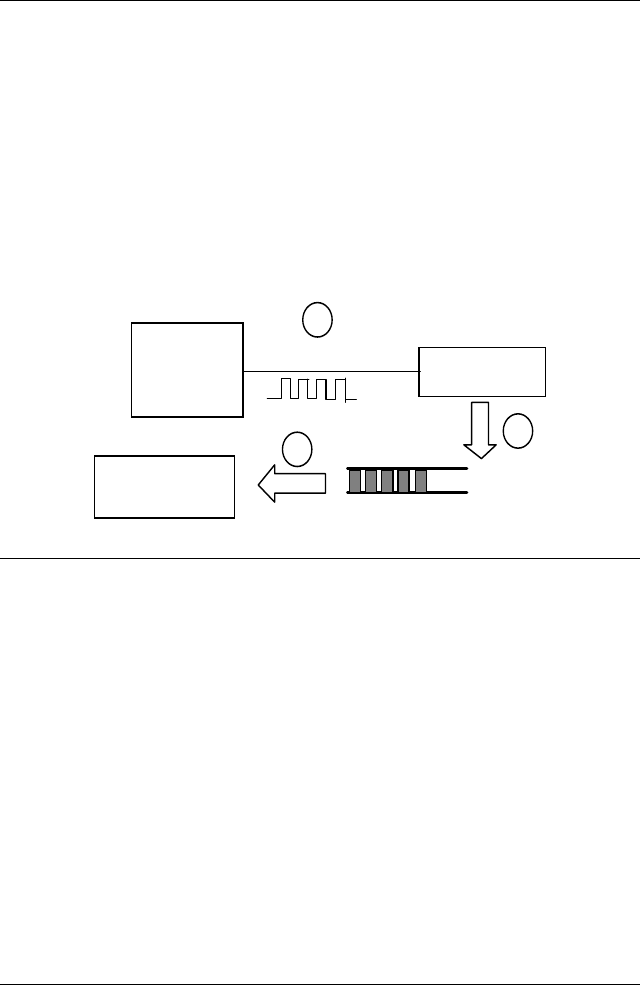
Operation Theory
•
31
4.3 External Clock Mode
The digital input is clocked by external strobe, which is from Pin 19 (I_REQ) of
CN2 (PCI-7200), Pin 24 of CN1 (cPCI-7200), or PIN 33 of CN1A (LPCI-7200S).
The operation sequence is very similar to the Timer Pacer Trigger. The only
difference is the clock source.
1. The external input strobe is generated from outside device, and goes
through the Pin 19 (I_REQ) of CN2 to latch the digital input.
2. The digital input data is saved in FIFO after an I/O strobe signal is coming in.
3. The data saved in input FIFO will be transferred to main memory on your
computer system directly. This is controlled by bus mastering DMA control,
this function is supported by PCI.
To Digital Input Trigger
Latch Digital
Input Data
Digital Input FIFO
Bus mastering
DMA data Transfer
PC's Main Memory
1
2
3
Pin 19 of CN2
4.4 Handshaking
The PCI-7200 also supports a handshaking digital I/O transfer mode. That is,
after input data is ready, an I_REQ is sent from an external device, and I_ACK
will go high to acknowledge the data already accessed.
I_REQ & I_ACK for Digital Input
1. Digital Input Data is ready.
2. An I_REQ signal is generated for digital input operation.
3. Digital input data is saved to FIFO.
4. An I_ACK signal is generated and sent to an outside device.
5. If the FIFO is not empty and PCI bus is not occupied, the data will be
transferred to main memory.


















